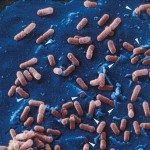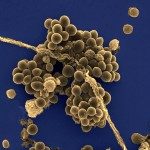Link to Pubmed [PMID] – 11901162
J. Cell Biol. 2002 Mar;156(6):943-6
Cholesterol-dependent cytolysins (CDCs)* are produced by a large number of pathogenic gram-positive bacteria. A member of this family, listeriolysin O (LLO), is produced by the intracellular pathogen Listeria monocytogenes. A unique feature of LLO is its low optimal pH activity (approximately 6) which permits escape of the bacterium from the phagosome into the host cell cytosol without damaging the plasma membrane of the infected cell. In a recent study (Glomski et al., 2002, this issue), Portnoy’s group has addressed the molecular mechanism underlying the pH sensitivity of LLO. Unexpectedly, a single amino acid substitution in LLO L461T results in a molecule more active at neutral pH and promoting premature permeabilization of the infected cells, leading to attenuated virulence. This finding highlights how subtle changes in proteins can be exploited by bacterial pathogens to establish and maintain the integrity of their specific niches.



